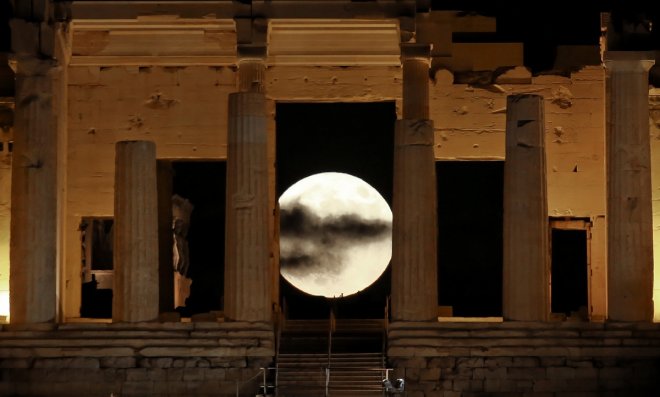
After the spectacular sight of November supermoon, star gazers will soon get a chance to witness another celestial treat as a big "supermoon" is on the way next week. The third and final supermoon of this year, which will also be the largest full moon until 2034, will be visible on Tuesday, December 13.
The supermoon will be rising in the eastern sky at 4:41 p.m. on Dec. 13 and will reach at its peak fullness at 7:05 pm EST (0005 GMT on Dec. 14), but it will appear full to the casual observer the night before and after the main event.
The December full moon will coincide with an annual Geminid meteor shower, which will be visible until the night of Dec. 16. But unfortunately, the supermoon's heightened size and brightness could cause the meteors to be less visible in the night sky.
The shower originates from "rock comet" 3200 Phaethon and appears to dart from the constellation Gemini.
According to the astronomy experts from the earthsky.org, the shower should still provide enough shooting stars to make the experience worth watching. The light of the full moon will reduce visibility "five to ten fold," according to a statement from NASA.
"It's one of the best and most reliable (meteor showers of the year) because it's in the early evening and it's bright," Jim Roselli, president of the New Jersey Astronomical Association told Nj.com.
Roselli also added that despite the full moon, some of the biggest and brightest shooting stars might be visible next week. "When the moon is illuminated in the sky, your eyes don't fully adapt to the dark," Roselli said.
How to get the best view?
If you're staying in an urban area, then you might not get a proper view. But, if you manage to go to an area with wide, open sky without a lot of light pollution, you'll have a clearer view of the supermoon. (If you don't know of any dark areas near your home, check the Dark Site Finder for recommendations.)
And, if you want to experience an amazing sight of the Geminid meteor shower, then you should try and look at the opposite part of the moon in the sky. Roselli said: "The best thing to do is completely look away" from the moon.
How will the meteors compete with the moonlight?
Though there are chances that the super moon will make it difficult to spot the meteors, scientists say that since the meteors are actually gravel and dust particles left behind by the asteroid 3200 Phaethon, there are high chances of them being bright enough get distinguished.
Moreover, on 13-14 December the earth will be passing through the densest portion of the meteoroid stream and the Geminid radiant, which is the point from where the meteors appear to be coming from, reaches the high point in the sky, directly overhead and thus it increases the visibility of the meteors. This year the Geminid radiant will be at the ideal position on the morning of Dec 14, just after the midnight.
According to a report by MeteorWatch.org, people in areas with dark skies might have an opportunity to see as many as 60 to 100 shooting stars per hour during the shower's peak night.
But in case if you miss catching a glimpse of the supermoon, you don't have to worry. The Virtual Telescope Project will showcase the supermoon beginning at 16:00 UT (11:00 a.m. EST) and stream it online.









